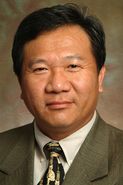Meeting
2012 ASCO Annual Meeting

Neuro-Oncology Program, Cedars-Sinai Medical Center, Los Angeles, CA
Surasak Phuphanich , Christopher Jay Wheeler , Jeremy Rudnick , Mia Mazer , Hong Qiang Wang , Miriam Nuno , Jaime Richardson , Xuemo Fan , Jianfei Ji , Ray M Chu , James Bender , Elma S. Hawkins , Chirag Patil , Keith L. Black , John Yu
Disclaimer
This material on this page is ©2024 American Society of Clinical Oncology, all rights reserved. Licensing available upon request. For more information, please contact licensing@asco.org
2012 ASCO Annual Meeting
Poster Session
Central Nervous System Tumors
Central Nervous System Tumors
Central Nervous System Tumors
NCT00576641
J Clin Oncol 30, 2012 (suppl; abstr 2087)
10.1200/jco.2012.30.15_suppl.2087
2087
18B
Abstract Disclosures
2023 ASCO Annual Meeting
First Author: Daniela Annenelie Bota
2023 ASCO Annual Meeting
First Author: Laura Ridolfi
2014 ASCO Annual Meeting
First Author: Patrick Y. Wen
2023 ASCO Annual Meeting
First Author: David D. Tran